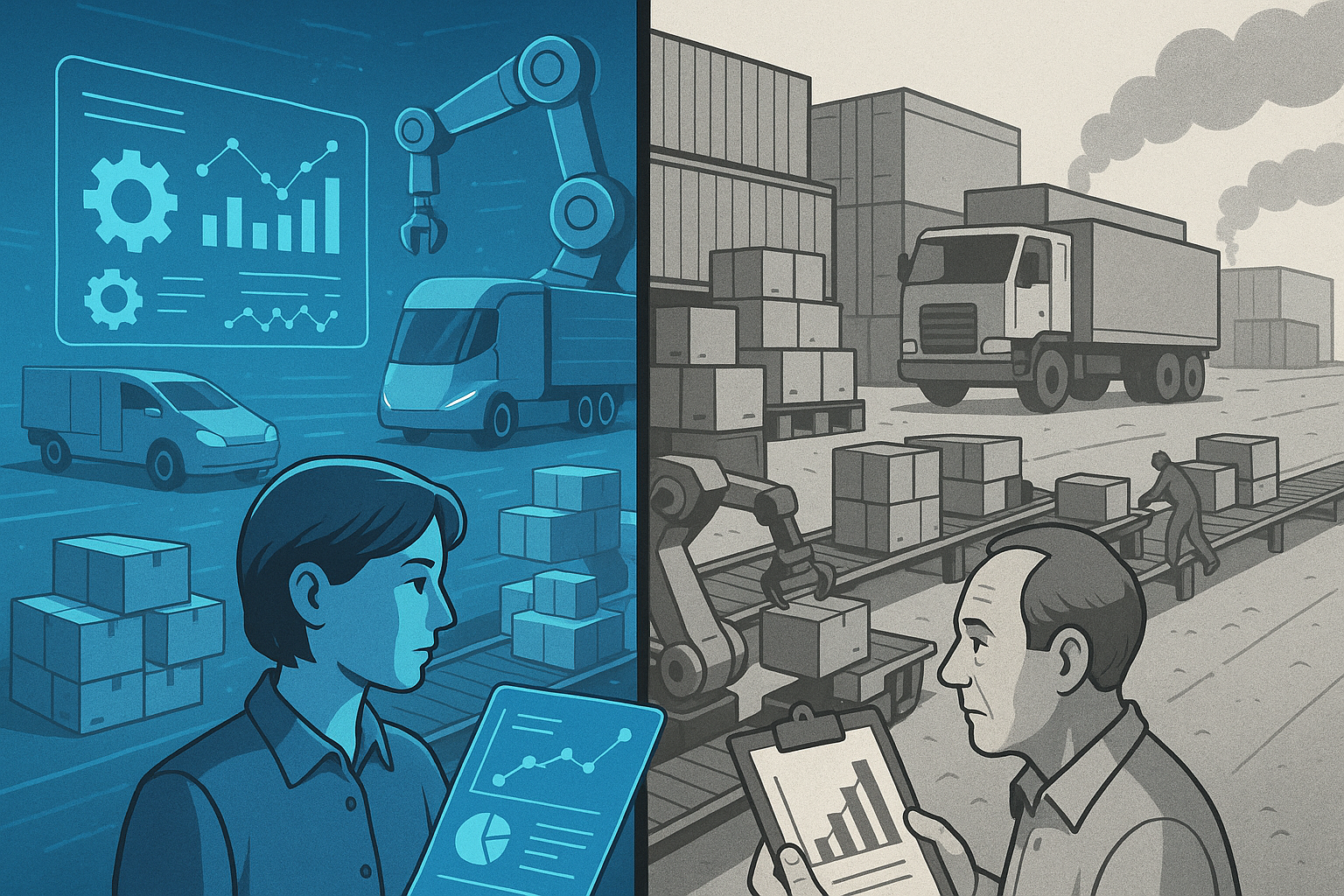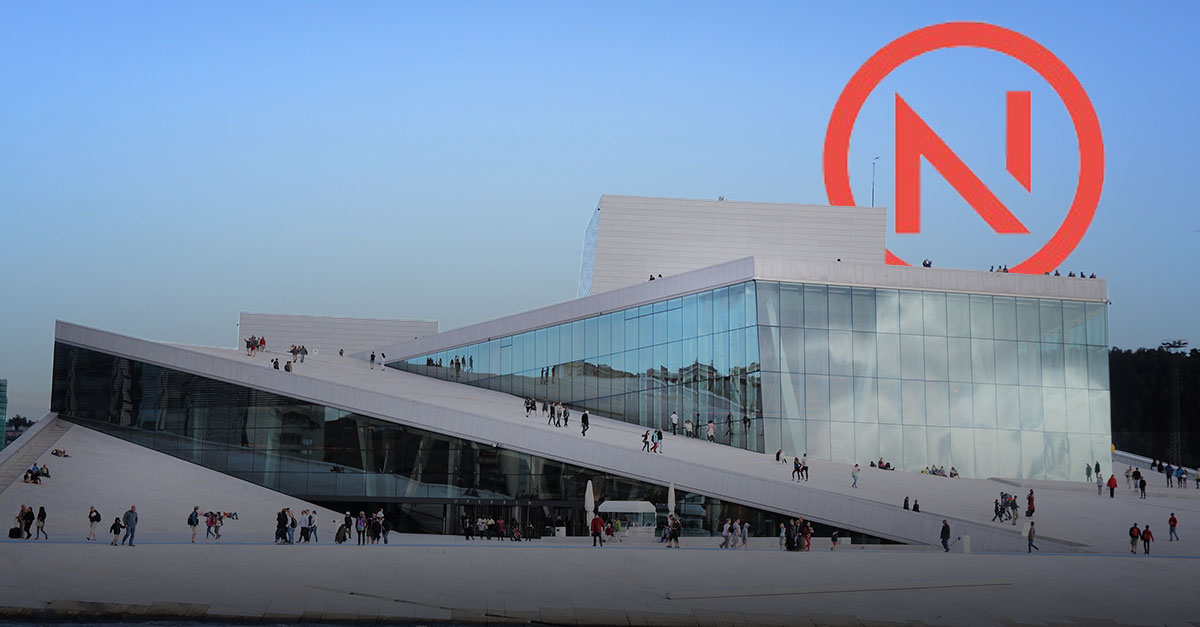
Die wachsende Kluft: Die Unternehmen, die ihre Lieferketten weiterentwickeln - und die, die es nicht tun
In der Welt der Lieferkettenplanung klafft eine große Lücke. Auf der einen Seite stehen Unternehmen, die sich aktiv weiterentwickeln, in neue Technologien investieren, Unsicherheiten in Kauf nehmen und belastbare, anpassungsfähige Lieferketten aufbauen. Auf der anderen Seite stehen diejenigen, die an veralteten Prozessen und Altsystemen festhalten und hoffen, dass schrittweise Veränderungen schon irgendwie ausreichen werden.
Die Wahrheit ist, dass die Kluft immer größer wird. Und es wird immer einfacher zu sagen, wer gewinnen wird.
Zwei Wege, zwei Ergebnisse
Die Lieferketten werden durch zunehmende Störungen, geopolitische Unruhen, Inflationsdruck, Arbeitskräftemangel, Rohstoffschwankungen, Klimaschwankungen und veränderte Kundenerwartungen bedroht. Aber die besten Unternehmen überleben nicht nur, sie gedeihen.
Was unterscheidet die Spitzenreiter von den Nachzüglern? Es geht nicht nur um Kapital oder den Zugang zu Daten. Es ist eine grundlegend andere Denkweise und ein anderer Ansatz für die Planung.

Was die führenden Unternehmen anders machen
1. Adaptive Planung statt statischer Prognosen
Unternehmen der Spitzenklasse wissen, dass eine monatliche (oder vierteljährliche) Planung und das Hoffen auf das Beste nicht mehr möglich ist. Sie sind über deterministische Prognosen für ein einziges Szenario hinausgegangen und haben sich für eine adaptive Planung entschieden, die auf probabilistischer Modellierung und KI basiert.
Diese Unternehmen nutzen die nächste Generation von Planungslösungen wie ketteQ, um Tausende von möglichen Szenarien in Sekundenschnelle zu simulieren, nicht nur um die Zukunft vorherzusagen, sondern um sich auf sie vorzubereiten. Indem sie die Bandbreite der Ergebnisse verstehen und sich proaktiv anpassen, sind sie Störungen immer einen Schritt voraus und nutzen die sich bietenden Chancen.
2. Einbindung der Planung in die Unternehmensstruktur
Führende Unternehmen betrachten die Planung nicht als eine auf die Lieferkette beschränkte Silofunktion. Stattdessen integrieren sie die Planung über Plattformen wie ketteQ auf Salesforce in Vertrieb, Betrieb, Finanzen und Kundenservice. Auf diese Weise entsteht eine einzige, einheitliche Quelle der Wahrheit, die es funktionsübergreifenden Teams ermöglicht, sich auf Nachfrage, Kapazität und Ausführung abzustimmen.
Wenn die Planung Teil des täglichen Geschäftsbetriebs wird, wird Agilität zu einem festen Bestandteil der Unternehmenskultur.

3. Schnelligkeit hat Vorrang
Im Gegensatz zu den langwierigen, kostspieligen Implementierungen älterer Planungssysteme setzen Führungskräfte auf schnelle, iterative Implementierungen, die innerhalb von Monaten, nicht Jahren, Ergebnisse liefern. Sie nutzen Cloud-native Plattformen wie ketteQ mit konfigurierbaren Workflows, wiederverwendbaren Komponenten und Low-Code-Schnittstellen, um die Einrichtungszeit zu verkürzen und das Änderungsmanagement zu vereinfachen.
Sie warten nicht auf Perfektion, sondern legen Wert auf Schnelligkeit, Lernen und kontinuierliche Verbesserung.
4. Planer mit KI befähigen, nicht ersetzen
Während Nachzügler befürchten, dass die Automatisierung die Planung obsolet macht, sehen führende Unternehmen KI als einen Kraftmultiplikator. Tools wie agentenbasierte KI-Lösungen befähigen Planer, sich von Tabellenkalkulations-Jockeys zu strategischen Problemlösern zu entwickeln.
Anstatt stundenlang Daten zu bearbeiten, konzentrieren sich Planer auf die Bewertung von Kompromissen, die Lösung von Konflikten und das Treffen intelligenter Entscheidungen in kürzester Zeit. KI ersetzt die Planer nicht - sie macht sie unentbehrlich.

5. Daten in Maßnahmen verwandeln
Leistungsstarke Unternehmen wissen, dass Daten nur dann nützlich sind, wenn sie zu Maßnahmen führen. Sie haben in eine durchgängige Echtzeittransparenz investiert und diese direkt mit Planungsprogrammen verknüpft, die die Auswirkungen simulieren und sofort Empfehlungen aussprechen können.
Dieser geschlossene Kreislauf stellt sicher, dass die Erkenntnisse aus der Lieferkette nicht nur beobachtet werden, sondern dass sie zur Erzielung echter, messbarer Ergebnisse genutzt werden.
Was die Nachzügler noch tun
Leider sind viele Unternehmen in einem Kreislauf des Status quo gefangen. Sie:
- weiterhin auf manuelle Prozesse und statische Tabellenkalkulationen zurückgreifen
- Sie sind an fragmentierte Tools gebunden, die nicht miteinander kommunizieren können.
- Planung in isolierten Abteilungen mit widersprüchlichen Daten durchführen
- Probleme mit Software-Implementierungszyklen, die sich über 12-36 Monate erstrecken
- Reagieren Sie auf Störungen, nachdem sie bereits eingetreten sind
- Inkrementalismus praktizieren und kleine Verbesserungen mit echter Veränderung verwechseln
Während die führenden Unternehmen ihre Lieferketten so umgestalten, dass sie anpassungsfähig und schnell sind, sind die Nachzügler oft in einer inkrementellen Denkweise gefangen und passen eine Prognose an, aktualisieren ein Modul oder reorganisieren eine Funktion nach der anderen. Inkrementalismus kann sich jedoch sicher anfühlen, während er die Wettbewerbsfähigkeit aktiv untergräbt.
In einer Welt, in der sich die Bedingungen von heute auf morgen ändern, können kleine Schritte nicht mit der Größe der Herausforderung Schritt halten. Was wir brauchen, sind keine besseren Tabellenkalkulationen oder etwas schnellere Batch-Jobs, sondern ein grundlegendes Umdenken bei der Planung.
Die Kluft wird nur noch größer
Die wachsende Kluft zwischen Planungsführern und Nachzüglern ist nicht nur eine Frage der Technologie. Es geht darum, wer in der nächsten Phase der globalen Supply-Chain-Evolution bestehen und gedeihen wird.
Unternehmen, die ihre Lieferketten weiterentwickeln, verschaffen sich einen dauerhaften Vorteil: schnellere Reaktionszeiten, höhere Servicequalität, niedrigere Kosten und bessere Gewinnspannen. Sie machen ihr Unternehmen nicht nur zukunftssicher, sondern übertreffen die Konkurrenz von heute.
Diejenigen, die sich nicht weiterentwickeln? Sie riskieren, dauerhaft zurückzufallen.

Letzter Gedanke
Die Lieferkette ist nicht mehr nur eine Back-Office-Funktion. Sie ist eine Waffe im Wettbewerb oder eine kritische Schwachstelle. Und jedes Unternehmen muss sich entscheiden:
Werden Sie sich weiterentwickeln - oder zurückbleiben?
Die Unternehmen, die heute mutige Schritte unternehmen und auf adaptive Planung, agentenbasierte KI und Cloud-native Architekturen setzen, schaffen eine Zukunft, in der die Planung schnell, reaktionsschnell und eng an den Geschäftsergebnissen ausgerichtet ist.
Das ist nicht nur Evolution. Das ist Überleben.
Lesen Sie den Definitive Guide to Adaptive Supply Chain Planning, um zu erfahren, wie Sie den nächsten Schritt in der Planungsentwicklung machen können.





